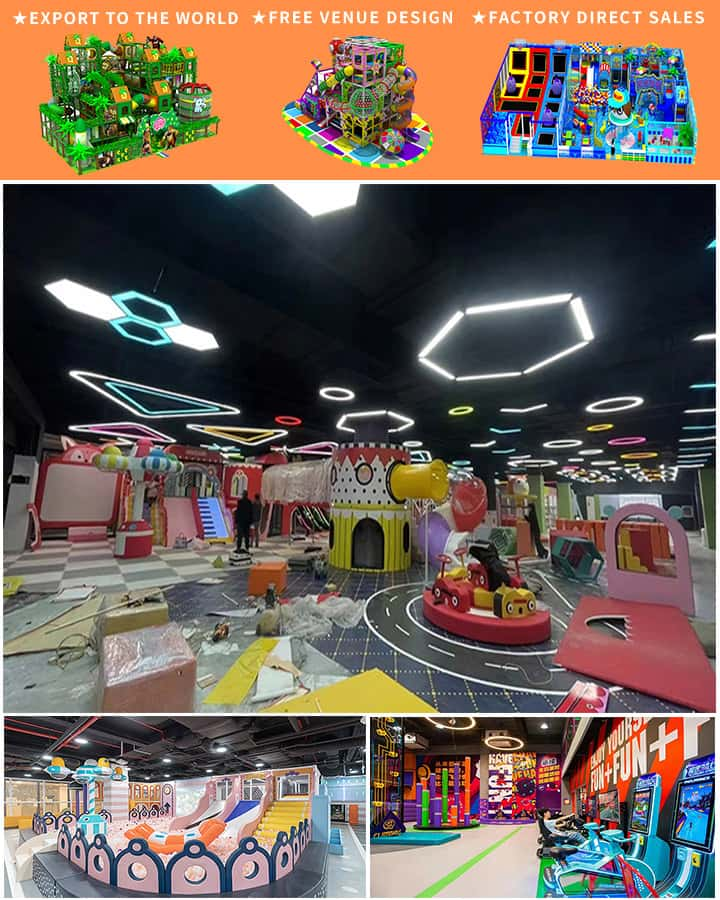Soft play equipment has rapidly become an essential feature in recreational spaces across South Africa. This surge in popularity is attributed to the numerous benefits that soft play installations offer, making them a staple in homes, schools, and commercial play areas alike. As the demand grows, so does the market for innovative and high-quality soft play equipment, tailored specifically for South African conditions and children’s needs.
The Evolution of Soft Play Equipment
Historically, playgrounds were dominated by traditional metal swings, slides, and climbing frames. However, as awareness of child safety and developmental needs increased, there was a significant shift towards safer, more engaging play environments. The evolution of soft play equipment marked a turning point in this transformation. These structures, made from foam, inflatables, and soft plastic materials, provide a safe and stimulating environment where children can explore, learn, and develop physical skills without the risk of severe injuries common in harder playgrounds.
Benefits of Soft Play Equipment
One of the primary advantages of soft play equipment is its safety. Designed with rounded edges and cushioned surfaces, these installations significantly reduce the risk of injury from falls and collisions. For parents and guardians, this peace of mind is invaluable. Additionally, soft play equipment encourages physical activity, helping children build strength, coordination, and balance in a fun and engaging way.
 Moreover, these play structures support cognitive and social development. Children are naturally drawn to interactive and imaginative play, which enhances their creativity, problem-solving abilities, and social skills. By navigating through tunnels, climbing on soft shapes, or bouncing on inflatables, kids engage in activities that stimulate their minds and bodies simultaneously.
Moreover, these play structures support cognitive and social development. Children are naturally drawn to interactive and imaginative play, which enhances their creativity, problem-solving abilities, and social skills. By navigating through tunnels, climbing on soft shapes, or bouncing on inflatables, kids engage in activities that stimulate their minds and bodies simultaneously.
Customization and Local Relevance
In South Africa, the adoption of soft play equipment has been customized to fit local contexts. Manufacturers and suppliers have adapted designs to reflect cultural themes and motifs, making the play experiences more relatable and enriching for local children. From vibrant colors representing diverse communities to shapes inspired by wildlife native to South Africa, these elements add a unique charm and educational value to the equipment.
Furthermore, considering South Africa’s varied climate, many soft play installations are designed to withstand harsh weather conditions, ensuring durability and longevity. Indoor soft play centers have also gained traction, providing year-round safe havens for children to play, irrespective of rainy days or extreme temperatures.
Economic Impact and Opportunities
The soft play equipment industry has not only enhanced recreational spaces but also contributed significantly to the economy. Local manufacturers and suppliers have found a thriving market, creating job opportunities and fostering entrepreneurship. The growth of this sector has encouraged innovation, leading to continuous improvements in design, safety standards, and material quality.
Additionally, the tourism and hospitality sectors have tapped into the appeal of soft play areas, integrating them into family-friendly establishments such as malls, hotels, and theme parks. This inclusion has helped attract domestic tourists and boosted the overall visitor experience, contributing to economic growth.
Community and Educational Initiatives
Soft play equipment has also played a crucial role in community and educational initiatives. Many organizations and non-profits have recognized the importance of safe play environments in early childhood development programs. By incorporating soft play structures into community centers and schools, these groups provide children from all backgrounds access to beneficial recreational resources. Such initiatives help bridge gaps in social inequality, promoting inclusivity and equal opportunities for physical and cognitive development.
Looking Ahead
As South Africa continues to embrace the positive impacts of soft play equipment, the future holds even greater promise. Advances in technology and materials science are expected to lead to further innovations, making soft play installations even safer, more sustainable, and interactive. With ongoing investment and community support, soft play equipment will undoubtedly remain a cherished component of South African childhood experiences.
In conclusion, soft play equipment has revolutionized how children play and learn in South Africa. By prioritizing safety, fostering development, and embracing cultural relevance, it continues to enrich the lives of children across the nation. As the industry evolves, it promises to bring even more joy, learning, and growth to young South Africans, shaping a brighter future for generations to come.




